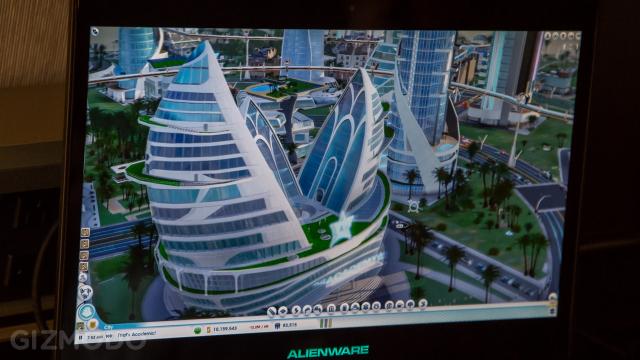Last night, Gizmodo got a sneak peek at the new SimCity: Cities of Tomorrow expansion pack due out next month. The eye-popping visuals of the relaunch were covered widely, immediately making a game as easy to discuss for its many frustrations as for its design advances, and we were thus keen to learn how Cities of Tomorrow expansion would continue or depart from the recent refresh.
There was a lot to see — a truly bewildering amount of new content — and an almost impossibly dense web of subsidiary information to take in. They’ve been working on the expansion pack since the re-release, back in February, and, creatively speaking, it shows.
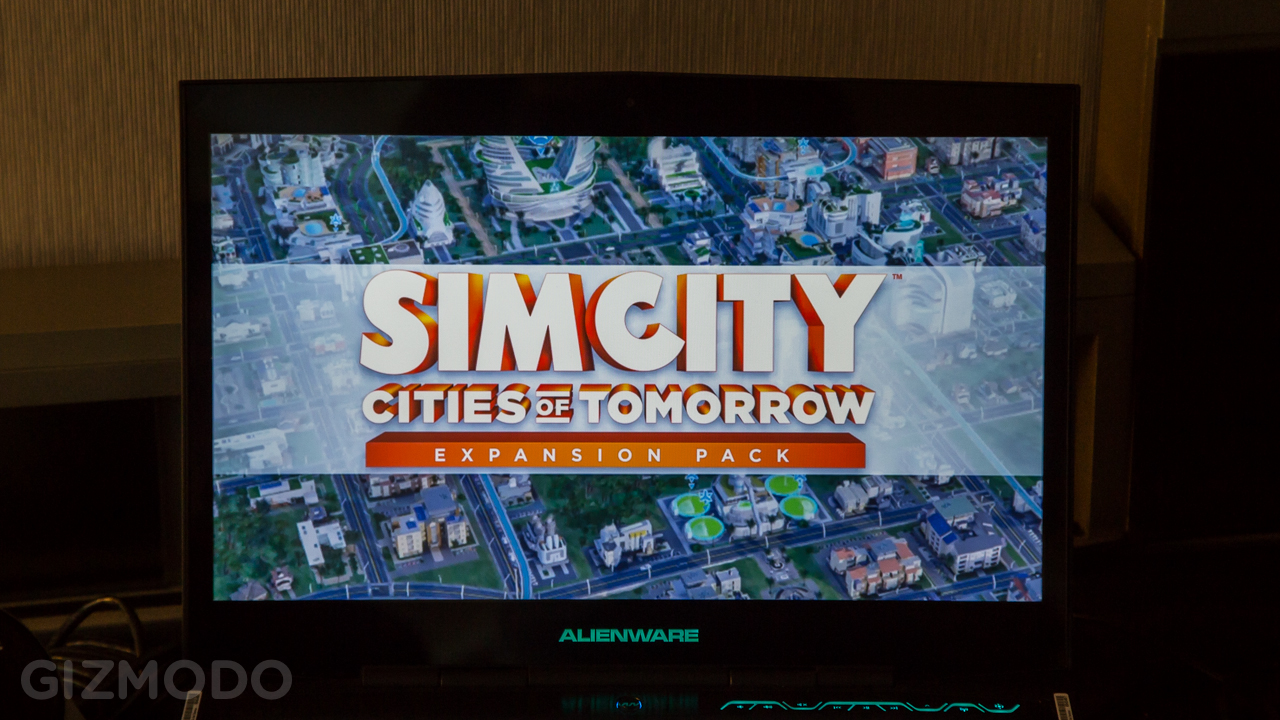
Clustered around an Alienware laptop in a hotel suite, sitting against a large glass window overlooking a cloudy late afternoon lit by neon lights in Times Square, we watched as Stone Librande, the game’s designer, took us through a demo. High-rise “megatowers” rise from the digital ether as we learned more about how it all came together and if some of the technical hurdles of the relaunch had been fixed.
Pitched around the idea that this would take place 50 years in the future, the narrative challenge was to incorporate into the game whatever new technologies would seem appropriate for that limited time horizon. Think personal shopping drones, not UFOs.
So, as a cityscape goes, it’s all recognisable, from MagLev transportation systems and a “skybridge” level between buildings to, of course, the city’s exoskeletal megastructures looming over the rest of the population like watchtowers.
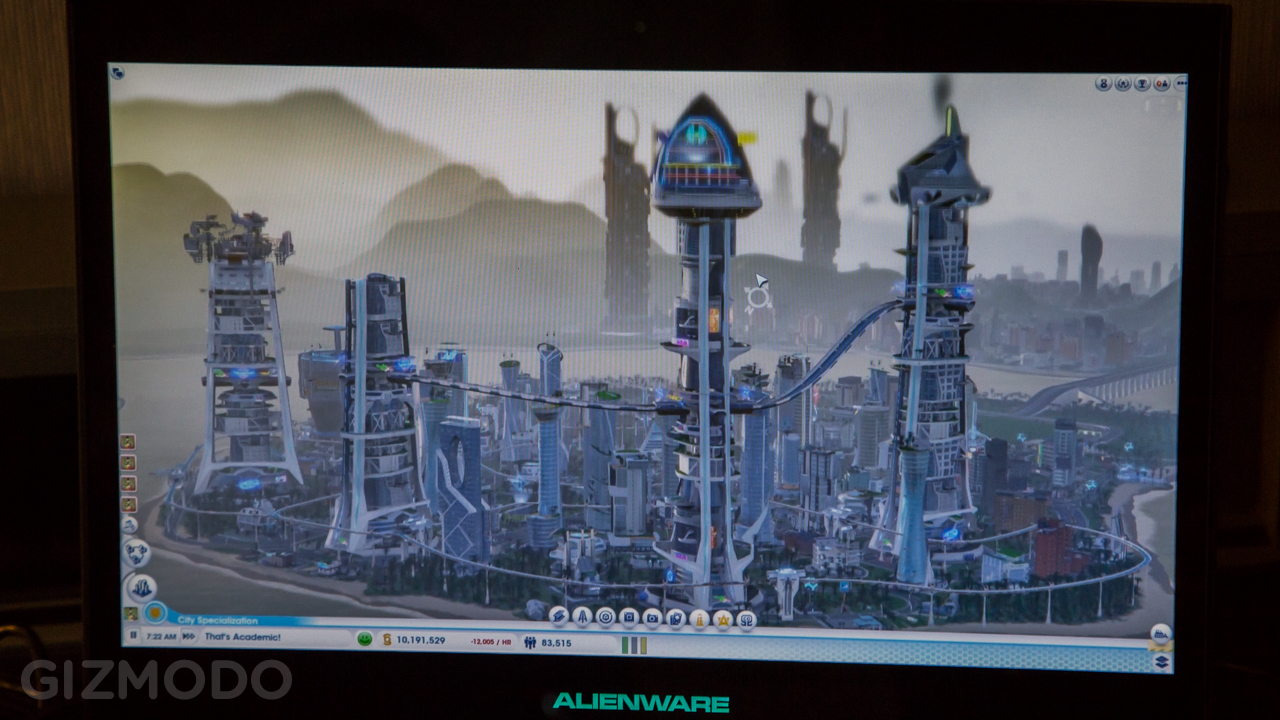
And that’s where some strange political overtones creep in; Librande explained to us that the game deliberately has something of a moral dilemma built into the functioning of the city itself. This was the notion of the ControlNet: an NSA-like (Librande made the comparison) know-it-all network of the 1% (again, Librande’s analogy), made up primarily of well-paid IT workers rich enough to build, manage, and pay for the technical networks that actually run the city.
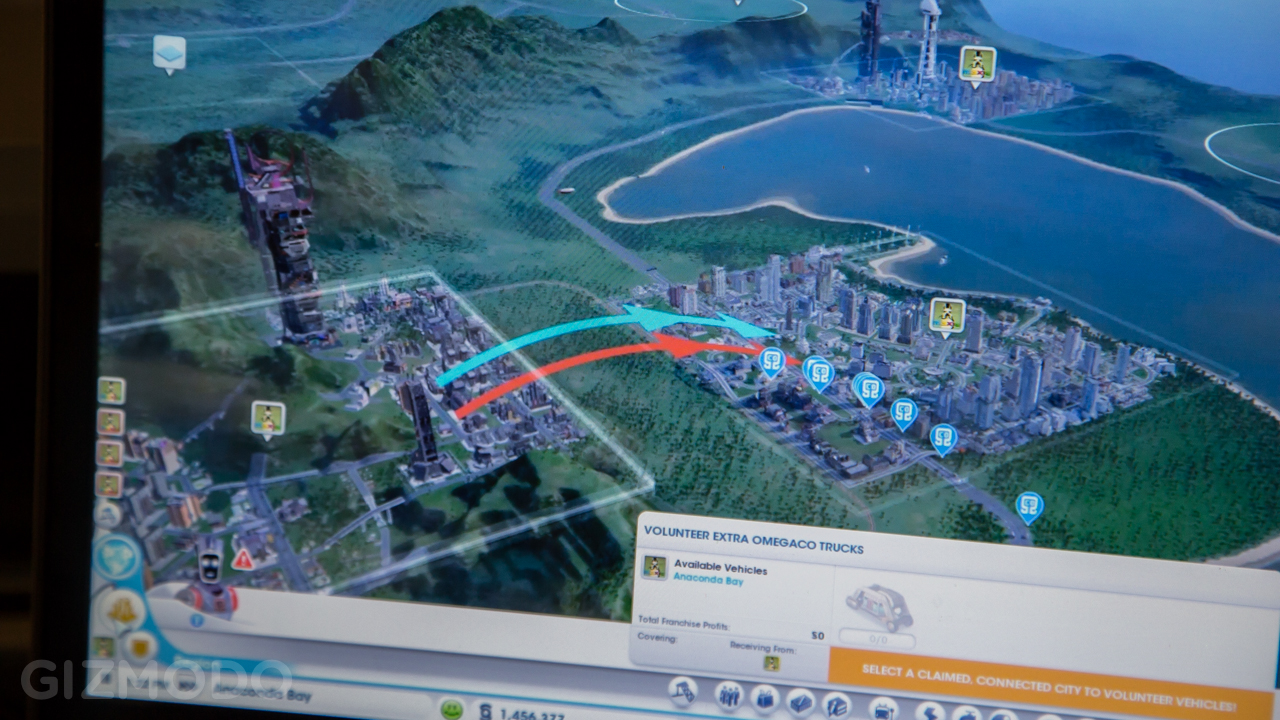
Continuing to toss out analogies — he remarked several times how many scifi films and comic books the design team watched and read — he compared it to the recent Neill Blomkamp film Elysium, where the rich live in cocooned safety, literally above the fray. Librande wants that to be uncomfortable, he said, to show players the temptation of designing a city only for the affluent, with both carrots and sticks for sculpting an unequal-opportunity metropolis for the elite, causing players to make real, moral decisions in the administration of their cities.
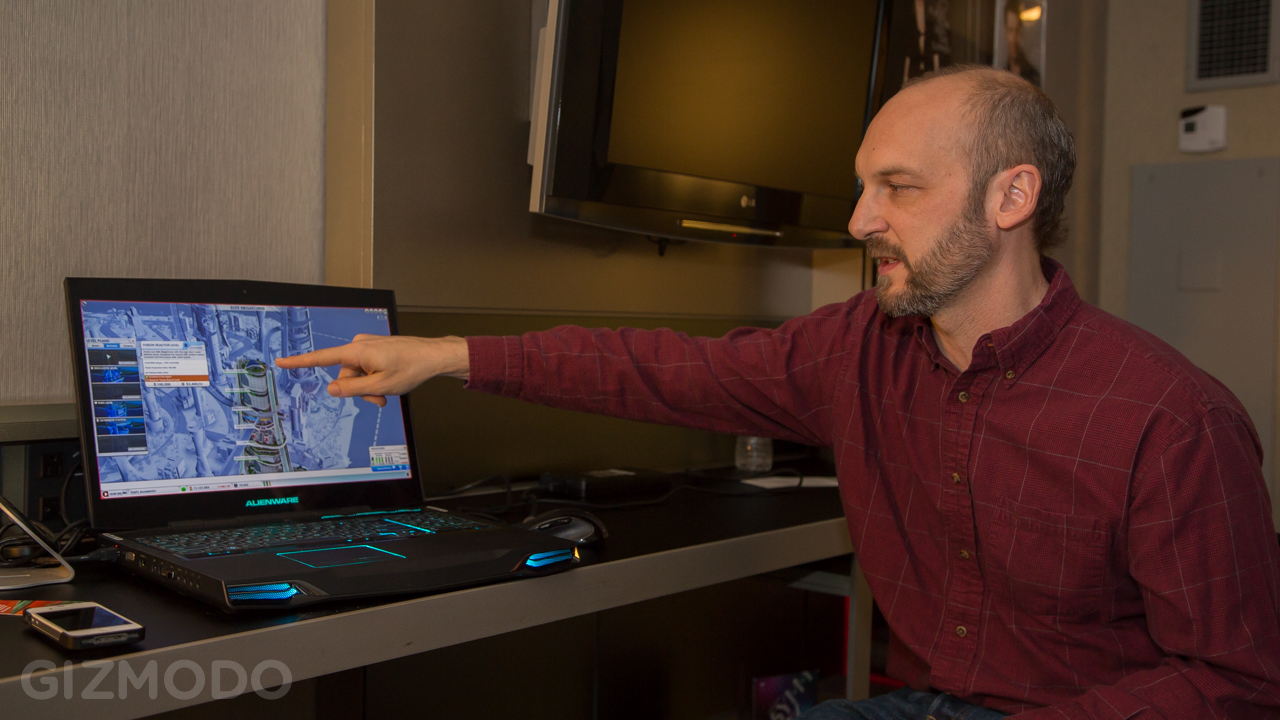
You can even open a ControlNet sub-menu and see all of the properties — the sites, buildings, and pieces of infrastructure — owned and operated by them, and, as a mayor, you have the power to arrange things so that you might discourage ControlNet from setting up shop in your city… but, of course, this also means losing all your white collar technical workers, and, in a sense, losing your city’s architectural future.
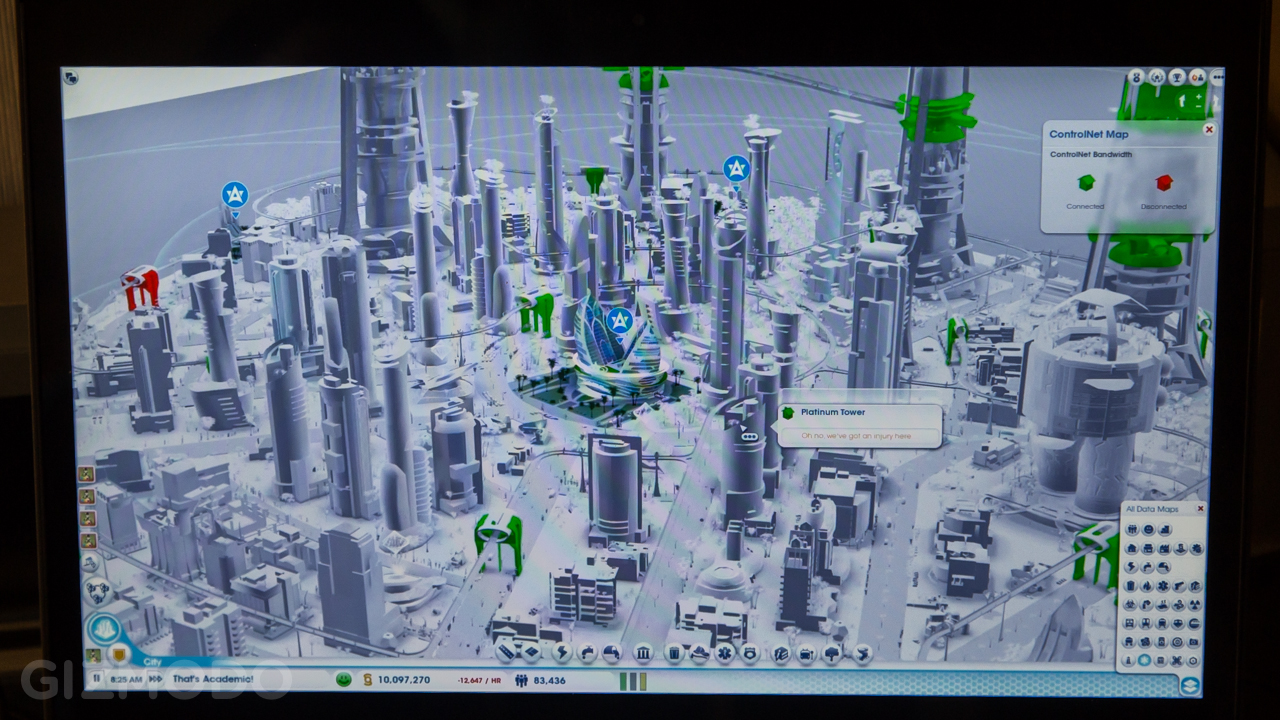
The game is ultimately a tale of two cities: one a pristine upper-class megalopolis full of glittering towers and carpets of green, its towers crowned with high-tech pollution scrubbers, the other a dingy, sprawling, commercial dystopia devoted to the buying and selling of a mysterious substance called “Omega.” But they are two sides of the same urban coin.
First, there is a gleaming metropolis that revolves around “the Academy,” a research hub where upper-class workers develop next-generation technologies for the surrounding city. It’s Silicon Valley meets Singapore: lush “mega-towers” that contain everything a well-to-do future family would ever need, including apartments, malls, schools, restaurants, and even nuclear fusion reactors that power the whole shebang (whole towers can be filled with fusion reactors, Librande explained, and act as fuel cells for the surrounding city).
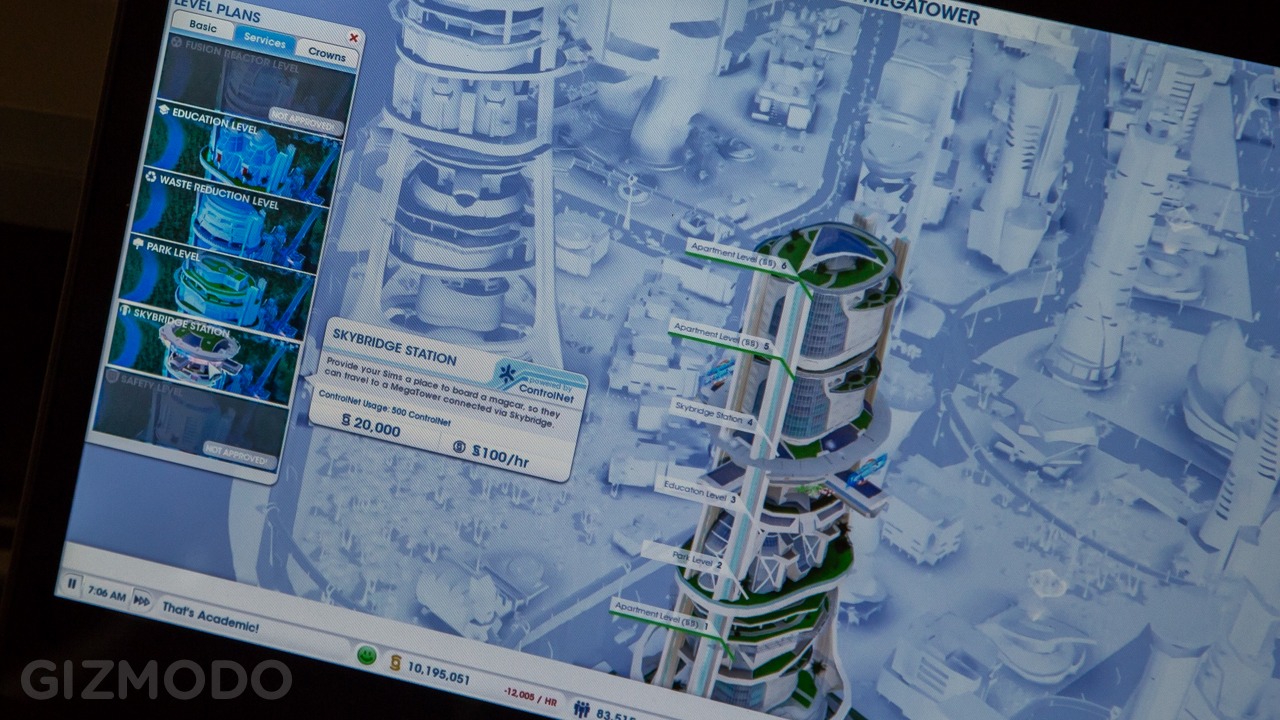
In between them, skybridges built using graphene nanotubes (developed at the Academy, of course) connect communities; below them, maglev trains and wide public parks connect the Academy itself (which looks a lot like Moshe Safdie’s ArtScience Museum in Singapore) to the superstructures. It’s easy to imagine Elon Musk on his way to work here.
Each building in the demo was named by the game’s designers in a manic session of christening, Librande explained, and they reveal their identities when you hover over them: The Promethean, the Skyclops, even one cheekily named Blade Running Shoes.
OmegaCo, on the surface, couldn’t be more different.
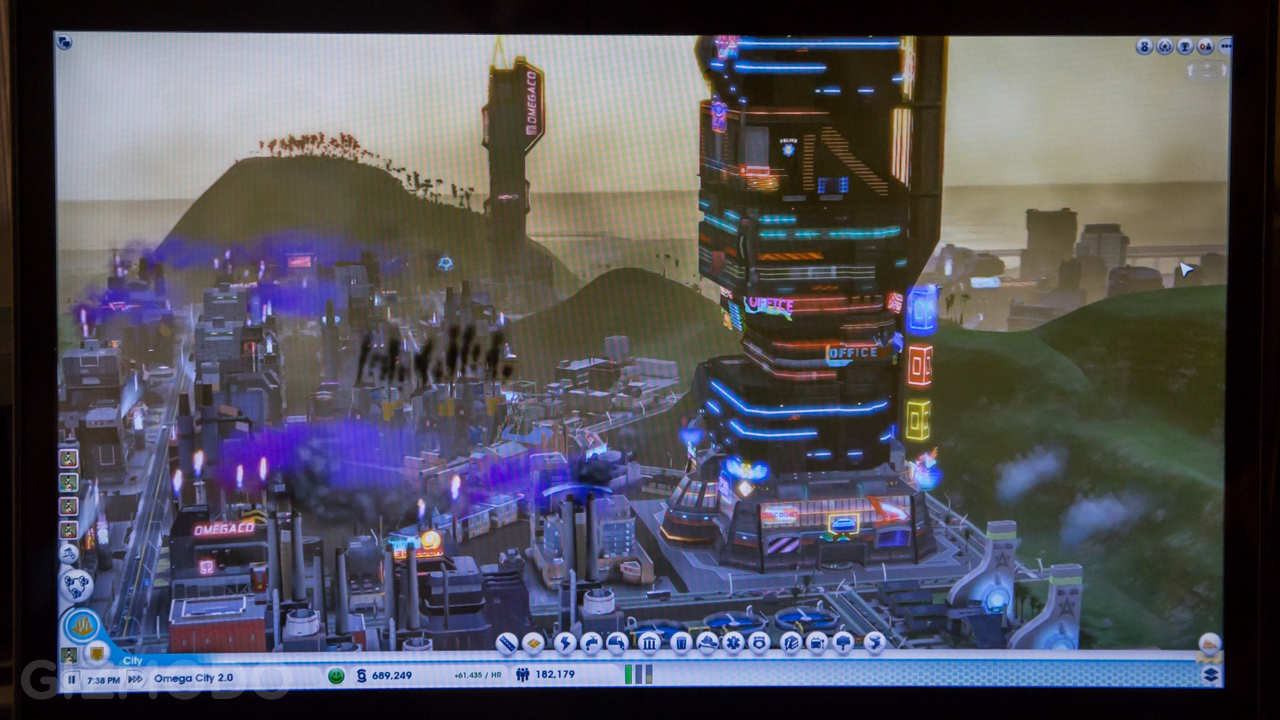
It’s a sprawling, film noir city of industry devoted to the buying and selling of Omega, a substance, Librande explained, they deliberately left undefined: their version of Unobtainium. Citizens desperately want it, despite its disastrous effect on the environment. The frenetic commercial pace, the shining holographic billboards, and the pollution make this more like Kowloon City crossed with post-War London: High-rises flanked with 3D advertisements, facades covered in grime, and oily brownfields.
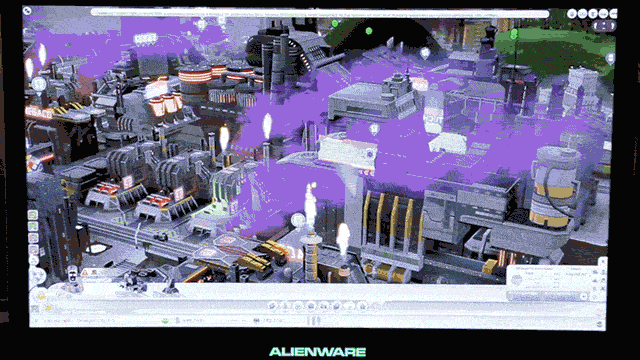
Instead of building glassy monuments to technology, mayors in OmegaCo are part of a grim scheme to retrofit their cities and assist in the production of their ambiguous fuel. As the operation expands, the city changes with it: Old buildings are retrofit using “bolt-ons” to the existing facade, which transform normal-looking structures into Brutalist monuments, covered in neon fins and windowless metal louvres, like something out of Dredd. Even the residential homes transform under the spell of Omega: A ranch home might suddenly sprout an antenna, then a futuristic addition, until, soon, the whole structural shell looks like a futuristic aluminium jellybean.
It’s easy to see Omega as an analogy for real-world forces: Technology, capitalism, pop culture, even a drug like Soma, as described in Brave New World. As Librande explains, the designers intentionally left it ambiguous. “We asked ourselves, ‘what are the issues and systems that want to make people see?’” he says. That can be as simple as where sewage goes or as complex as what motivates people to pollute. The whole point is to give users a glimpse of the systems that control our world.
“There’s no dialogue box that ever pops up and says, ‘this is what you should be feeling right now. This is the message we’re trying to send you,’” Librande adds. “But we hope that it wakes you up just enough that you might go and investigate on your own.” After all, OmegaCo and the Academy aren’t actually so different. They’re the angel and devil on every city’s proverbial shoulder: The drive to become a haven of next-generation clean technology, and the need to spur economic development on a baser level.
So what are some other tricks and tips? You can build bridges and tunnels now, laying down roads that can be toggled vertically, watching them burrow down through hillsides to form tunnels or arc slightly up over the terrain to form the outlines of bridges before snapping into place. Sewage, a system that was conspicuously absent from SimCity until the relaunch in February, gets a good deal more attention here. You can even toggle over into an x-ray view that shows rust-coloured waste gurgling from each building, through a labyrinth of pipes, to the sewage plant.

There’s no shortage of cinematic drama in the expansion pack, as well, which makes sense — plenty of what we imagine about the future is based on film, and the game (and Librande himself) references everything from Logan’s Run and The Hunger Games to what seemed to be Librande’s favourite example, Futurama. Users can even toggle between Instagram-style “filters” that give their cities a moody tonality. For instance, there’s a sepia filter, as well as a washed-out option that paints the city in dreamy, Beach Boys-style pastels.
One filter, according to Librande, was inspired by Sin City: It filters your city in high-contrast black and whites, with pops of red thrown in for drama. It honestly looked pretty awesome.

Librande is clearly enthusiastic about the level of detail — and he should be, because it’s remarkable — but he cautioned several times against treating the game too seriously, as something that might serve as a real urban planning tool or as something that should be mistaken for a mathematically accurate model of the modern metropolis. It’s just a game, he insisted, although somewhat hesitantly.
But, he added, smiling slightly, he does hope that the overall re-design of the game — forcing players to design, or, at the very least, to consider, where their water comes from, where the trash goes, where the sewers back up or flow out to sea — will get people thinking about the invisible systems currently at work all around them, the constellations of infrastructure embedded behind the scenes of everyday life that we, all too often, take for granted. And, if getting players to imagine their own city within a realistic time-horizon — 50 years in the future — is another imaginative tool for inspiring people to rethink their cities, then all the better.
The expansion pack will be available November 12, 2013 — and we’ll be watching not only for player reaction but to see if the technical problems that plagued the February re-release have been answered.
